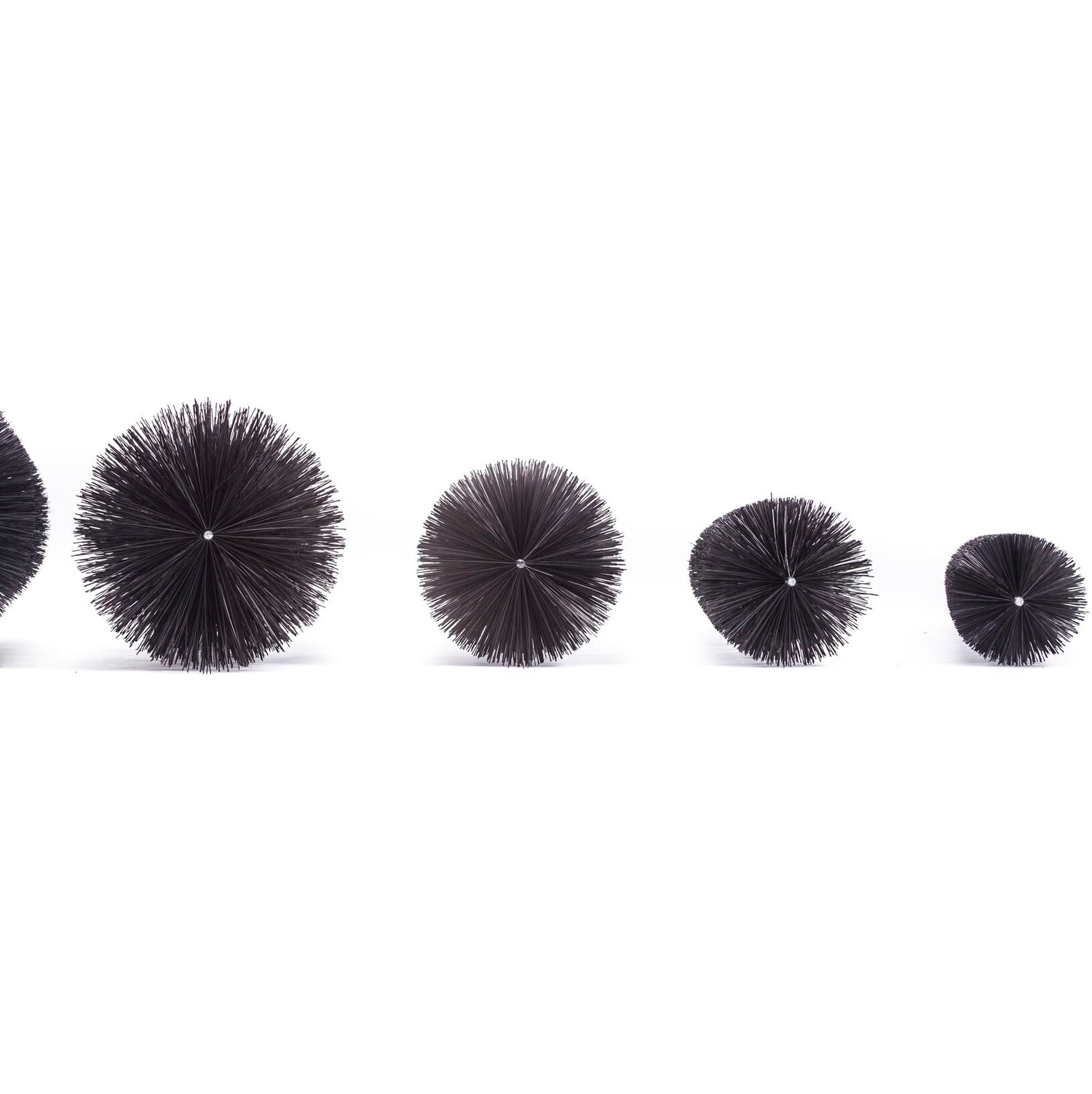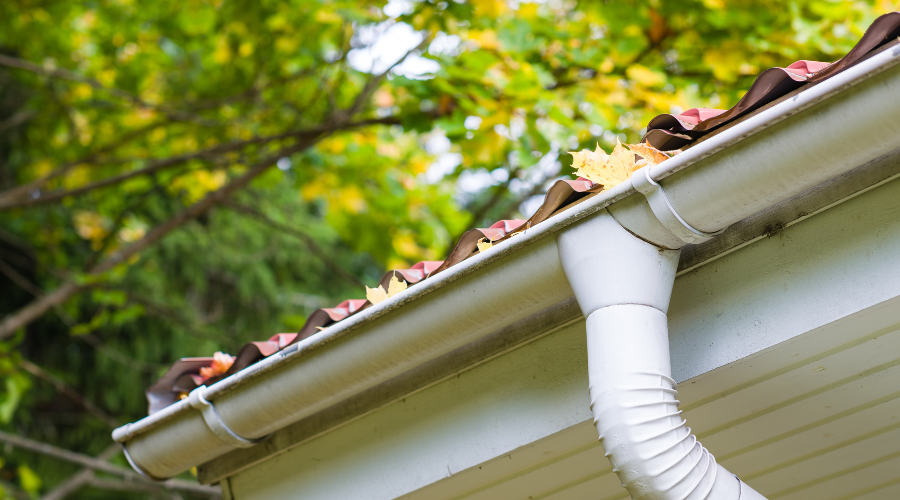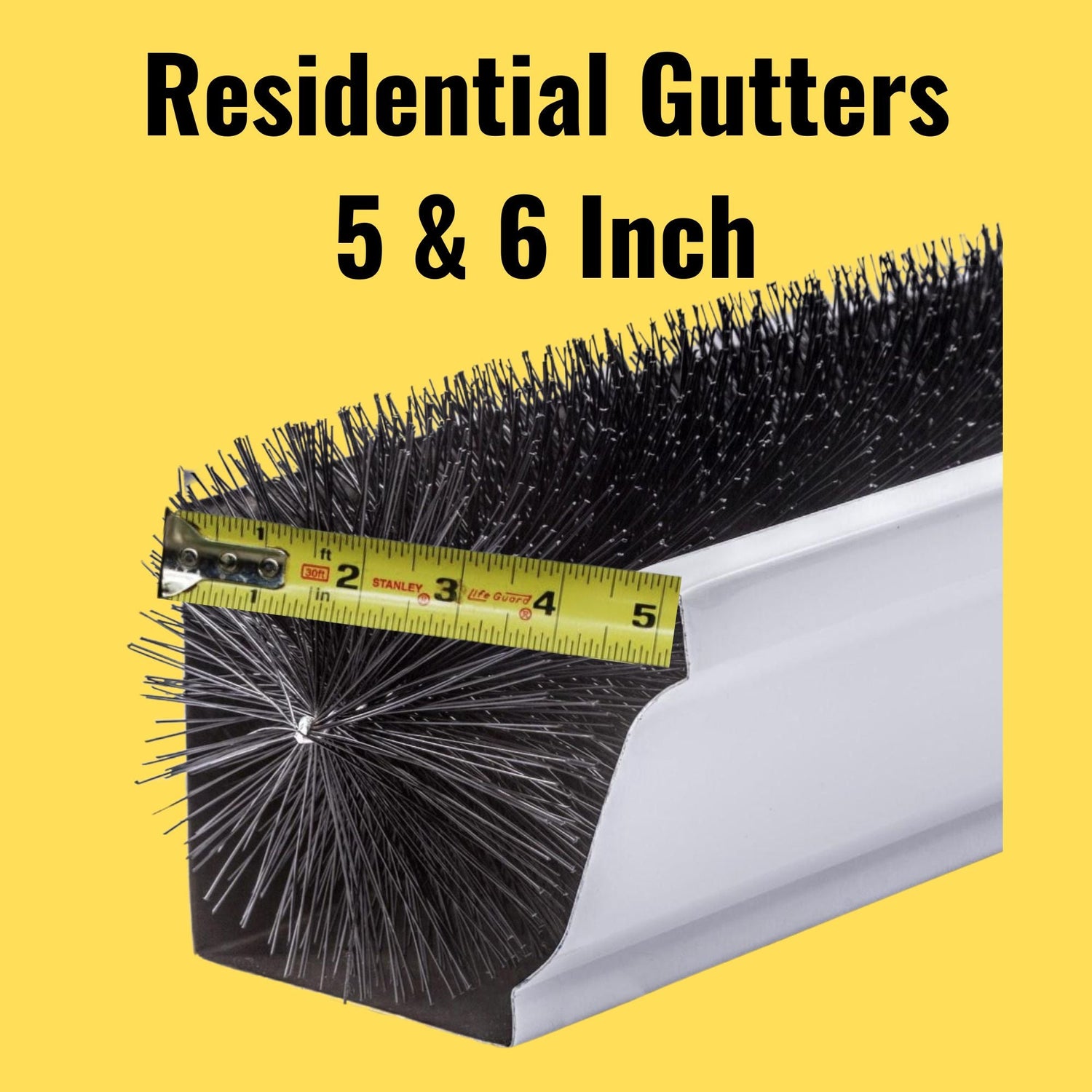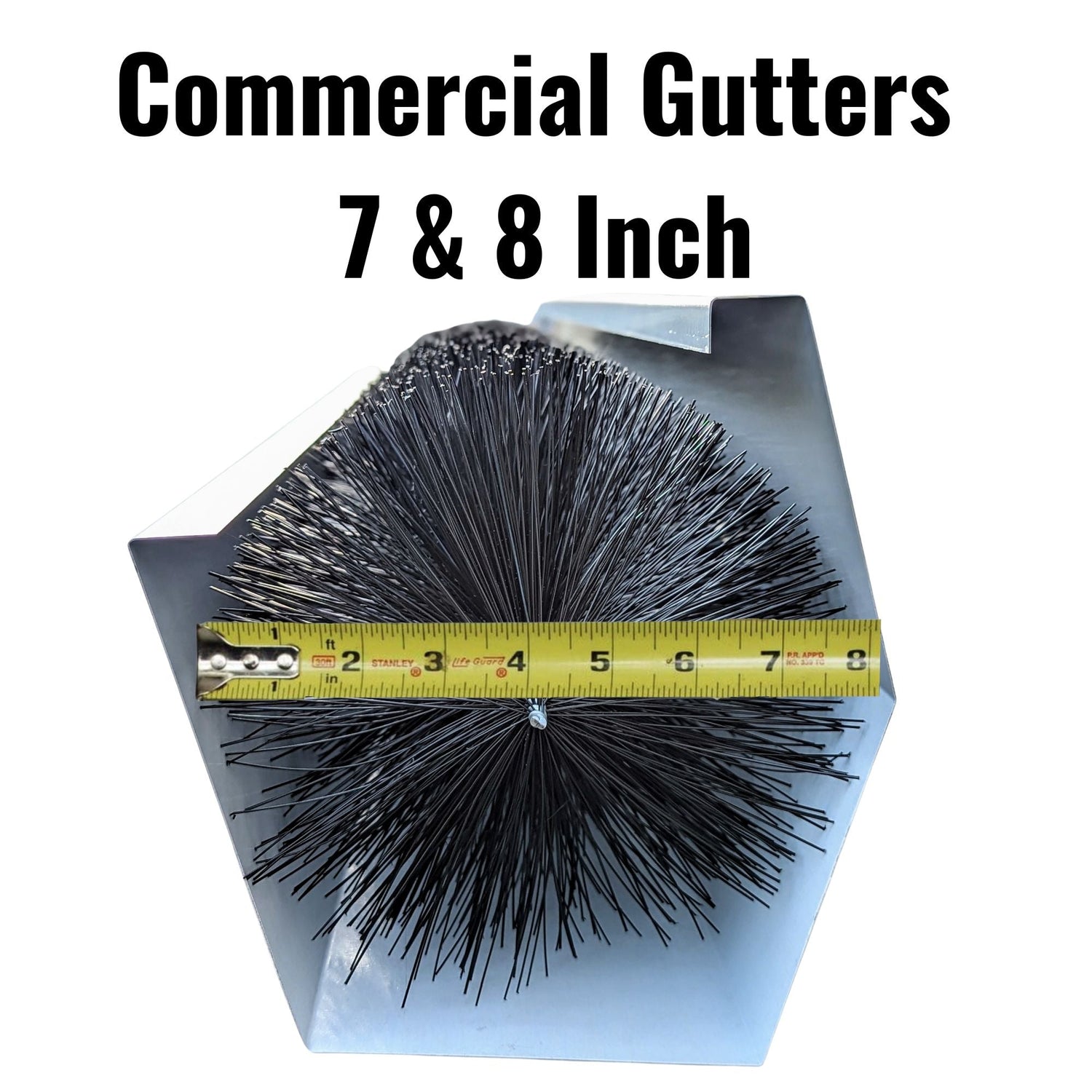When it comes to maintaining your home, ensuring that your gutters are in optimal condition is key to preserving the exterior of your building. Foam gutter guards are often marketed as an affordable solution to gutter clogs, but do they truly work, or are they just a short-term fix? In this in-depth analysis, we’ll explore the functionality of foam gutter guards and compare them to alternative solutions.
Understanding Gutter Guards and Their Functionality
Gutter guards serve as a shield for your home's gutter system; a first line of defense against the detritus that nature throws your way. They are integral to a well-maintained home, designed to permit the free flow of water from your roof to the ground, all while blocking leaves, twigs, and other organic materials that could cause blockages. Without effective gutter guards, blocked gutters could result in water backing up and potentially damaging your home's soffits, trim, foundation, siding, and landscaping. The effectiveness of a gutter guard is measured not only by its ability to filter out debris but also by its longevity and its impact on the overall efficiency of the gutter system. When evaluating if foam gutter guards work, you must consider these factors and how they align with your home maintenance goals.
The Case for Foam Gutter Guards: A Temporary Solution?
Foam gutter guards present themselves as a plug-and-play solution, easily tucked into gutter channels with the promise of filtering out unwanted material. Their porous nature is meant to let water through while catching leaves and debris, however, this material may not be as enduring or effective as you might hope; mainly because the pores are very small and they trap small gutter debris. While initially low in cost and seemingly convenient, foam gutter guards can quickly become a cradle for silt, dust, dirt, and small pollution particles that the rain washes off your roof. This sediment can embed itself within the tight pores of the foam, reducing its permeability and, over time, can turn these gutter foam into a solid barrier that impedes water flow. This not only defies the purpose of having gutter guards but may also lead to the very clogs they're meant to prevent, questioning the reliability of foam gutter guards as a long-term gutter solution.
The Pitfalls of Foam Gutter Guards: What to Watch Out For
The challenges with foam gutter guards; aka gutter foam, go beyond just their clog prone nature. Their material composition is susceptible to the elements. Over time, exposure to the harsh spectrum of weather — from the searing heat of summer to the freezing chill of winter — can degrade the integrity of the foam. Additionally, gutter foam provides a hospitable environment for seeds carried by the wind to take root, which can lead to unexpected mini ecosystems thriving in your gutters. This can cause more frequent maintenance checks, which contradicts the 'set-and-forget' expectation that many homeowners have for gutter guards. Thus, while they are marketed as a way to reduce maintenance, foam guards may, in fact, demand more attention over time.
A Reliable Alternative: The Efficiency of Non-Foam Solutions
In contrast to the gutter foam variant, non-foam gutter guards such as GutterBrush provide a more robust solution. Constructed from durable materials that withstand harsh weather conditions, these guards maintain an open channel that encourages water flow and deters debris accumulation. They work on a simple yet effective principle: the brush bristles stop larger debris while allowing water — and even small particulates — to flow freely through. This design not only prevents the formation of blockages but also circumvents the issues of water damming, downspout plugging, and overflow.
For homeowners, particularly those who enjoy DIY projects, the GutterBrush represents a blend of performance, durability, and ease that foam gutter guards simply cannot match. Foam slides entirely under the cross bar gutter brackets and sits deep within the gutter allowing debris to build up on the foam: not so for Gutterbrush.

Installation and Maintenance: Simplifying Your Gutter Upkeep
One of the most appealing aspects of non-foam gutter guards is their user-friendly installation process. Products like GutterBrush can be placed into gutters without the need for specialized tools, fastening, or professional services. This do-it-yourself approach is not only cost-effective but also ensures that homeowners can easily manage their gutter maintenance. When you slide GutterBrush under the gutter brackets and into the gutter, the bristles spring upward back into place providing a raised bristle profile so that debris that lays on Gutterbrush is up higher than the sides of the gutter so that the wind can blow it off: not so for gutter foam which simply sits in the gutter below the gutter brackets.
The simplicity of the design also means that checking and cleaning your gutters doesn't become an all-day project. In the rare instances that debris needs to be removed, the guards can be easily taken out and replaced after cleaning. This hassle-free maintenance saves time and energy, providing peace of mind for homeowners.
Comparing Costs: Foam vs. Non-Foam Gutter Guards
Initially, foam gutter guards might seem like the more economical choice. However, when considering the long-term costs associated with their potential for frequent replacements and the increased likelihood of gutter blockage, they often end up being the more expensive option. Non-foam gutter guards, on the other hand, typically come with a higher upfront cost but offer significant savings over time due to their longevity and reduced maintenance needs. It's also worth considering the potential cost of water damage from clogged gutters, which non-foam solutions are more effective at preventing. The foam has such small pores, that it is very difficult to clean and renew; most people just throw their hands in the air with frustration while throwing the gutter foam in the trash barrel.
When it comes to safeguarding your home against the elements and ensuring the uninterrupted flow of water through your gutters, investing in a reliable, non-foam gutter guard like GutterBrush is a decision that pays off in the long run. Gutterbrush allows water to flow freely, and eventually is very easy to clean and re-use if necessary.
Do Foam Gutter Guards Work in Harsh Weather Conditions?
When assessing the performance of foam gutter guards, their response to extreme weather is a critical factor. The durability of these guards is often compromised in harsh conditions. In regions where the weather can switch from intense heat to freezing temperatures, foam materials are at risk of becoming brittle and breaking down, compromising their structure and effectiveness. While foam guards may initially perform well during moderate weather, they tend to hold moisture, which can freeze and expand, causing the foam to warp or crack. This not only affects their functionality but can also lead to increased maintenance or replacement costs.
In contrast, non-foam gutter guards, such as those offered by GutterBrush, are engineered to endure severe weather. GutterBrush is made of UV protected polypropylene bristles, making them an enduring solution even in areas with abundant sunshine and high temperatures, high precipitation or salty air. Their robust design ensures that they maintain their form and functionality, keeping gutters clear and operational year-round. Simply put, Gutterbrush lasts many years out in the gutter.
Ensuring Proper Water Flow: The Balance Between Clog-Prevention and Water Acceptance
The efficacy of any gutter guard system hinges on its ability to maintain a seamless flow of water while deterring the ingress of debris. Foam gutter guards, with their porous nature, might initially seem adept at this task. However, once they start to retain moisture and debris, they can impede the very water flow they're supposed to protect. This can result in overflow, which in turn can cause damage to a home's exterior and foundations.
GutterBrush, on the other hand, strikes an essential balance, ensuring that water can pass through the gutter system unhindered. Its design allows for debris to rest on top while water glides through the gutter channel below. This is especially important during heavy rainfalls, where the volume and force of water can be significant. By preventing blockages that could cause water to back up and overflow, GutterBrush effectively protects the home against water-related damage.
The Verdict on Foam Gutter Guards: Weighing the Pros and Cons
While foam gutter guards might initially attract homeowners due to their ease of installation and the allure of being a cost-effective gutter filter type solution, their long-term efficacy is questionable. They may offer a measure of protection against debris but at the potential cost of requiring more frequent maintenance and replacement; which could negate the initial savings due to their lower durability and potential for causing water flow issues.
On the flip side, non-foam gutter guards like GutterBrush are constructed with durability in mind, providing a more permanent solution to gutter protection. Their design caters to the critical needs of a gutter guard — effective debris filtration and unhindered water flow — ensuring that gutters remain functional in diverse weather conditions.
Addressing Gutter Maintenance: When to Check Your Gutters
No gutter guard system is entirely maintenance-free, and vigilance is key to ensuring their long-term performance. It is good practice for homeowners to observe their gutters during heavy rainfalls to verify that water is flowing as expected. This observational check can be done from a safe distance on the ground, without the need for ladders or risking personal safety. By ensuring that water is not overflowing, you can confirm that the gutter guards are performing correctly.
For systems like GutterBrush, this check-up is often a simple confirmation that everything is working correctly, as the system is designed to function well in all weather conditions. The need for physical maintenance checks is less frequent due to the product's durability and the engineering of the bristles that allow the water to pass through.
In conclusion, while foam gutter guards might serve as a stopgap, they often fall short in longevity and reliability, particularly in challenging weather conditions. Homeowners who prioritize both effectiveness and durability may find that a solution like GutterBrush, with its focus on both clog prevention and water acceptance, offers a more satisfactory and longer-lasting answer to their gutter maintenance needs.
Key Takeaways
- Questionable Longevity in Weather Extremes: When considering the primary keyword "do foam gutter guards work," it's crucial to assess their performance in various weather conditions. Foam gutter guards may not provide reliable, long-lasting protection through harsh weather conditions, unlike more durable alternatives like GutterBrush.
- Effectiveness Against Debris: "Are foam gutter guards any good" at preventing large debris from entering your gutters? They can become saturated and allow smaller particles to accumulate, leading to potential clogs and obstructed water flow, which is less likely with non-foam solutions.
- Maintenance and Durability: Foam gutter guards might offer an easy, short-term fix, but they often require more frequent maintenance and replacement, especially compared to non-foam options that offer a long-lasting solution with minimal upkeep. Gutter foam has pores that are too small and clog too easily.
- Cost-Effectiveness Over Time: The initial lower cost of foam gutter guards can be misleading. When evaluating "do foam gutter guards work" as a cost-effective solution, the potential long-term savings from investing in a more durable, re-usable, non-foam gutter guard system should be considered.
- Balance Between Protection and Functionality: A successful gutter guard system must prevent clogs while promoting consistent water flow. Foam gutter guards can hinder this balance, but products like GutterBrush are designed to ensure debris does not clog, thus maintaining proper water flow through the gutters. Eventually, Gutterbrush is very easy to clean and maintain and reuse.
About GutterBrush
At GutterBrush, we offer innovative gutter protection systems for both Residential and Commercial properties. Our unique brush technology, recognized by Home & Garden TV, The Family Handyman, At Home with Gary Sullivan, and Home Depot, ensures your gutters remain clog free while filtering rainwater, reducing the need to frequently buy gutter guards.
A family-owned company serving American homesteads since 2004, we're proud to have over 1200 5-star reviews, supported by a 10-year material warranty and a 365-day refund policy.




